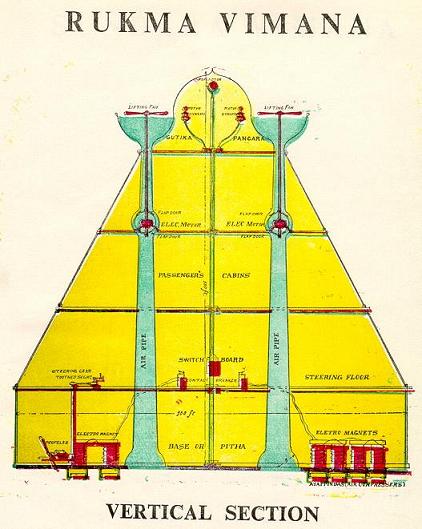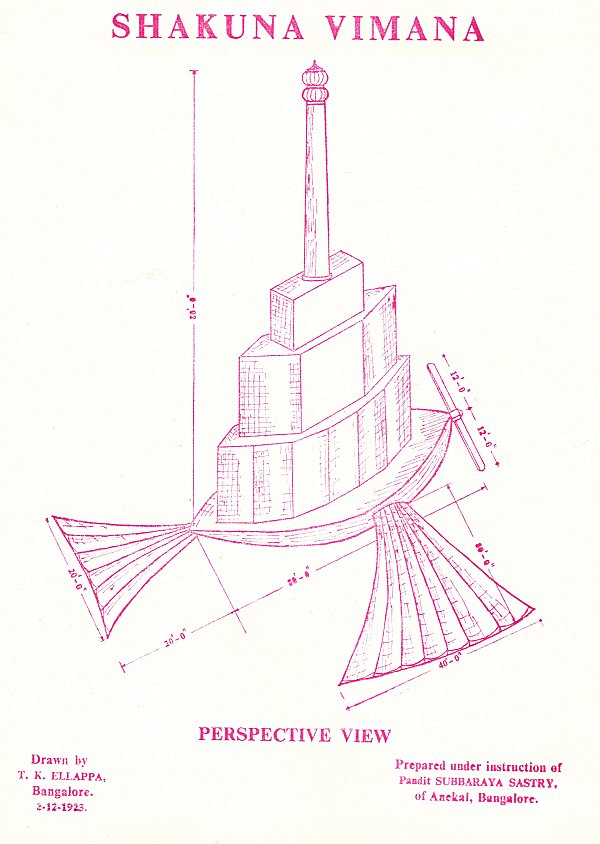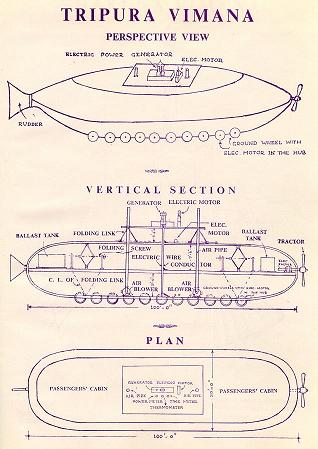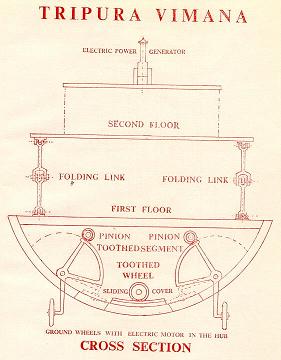|
The UFO Files Ancient UFO's |
||||
|
Ancient Indian Flying Machines, UFOs, or Sanskrit Sci-fi? ..
Vimanas:
Ancient Indian Flying Machines, UFOs, or Sanskrit
Sci-fi? “Flying chariots,” “celestial cars,” “mechanical birds,” “winged vehicles,” and “aerial cities.” These may sound like the swarming aircrafts from James Cameron’s sky-battles in Avatar, but, in fact, they come from a much older source: ancient Sanskrit literature. Called vimanas (pronounced “vimans”) in Sanskrit, such flying vehicles appear throughout India’s ancient texts, especially in combat sequences, when gods and divine beings battle their enemies high above the earth. Chariots flown by gods are not unique to Indian mythology: the Greek god Apollo flies the Sun Chariot; Kay Kavus, the mythological Persian king steers a flying throne to China; and Thor, of the Norse tradition, commandeers the Chariot of Thunder. What drew me to vimanas is the contingent of modern writers insist that these flying vessels are not limited to mythology – that is, they were actual machines, constructed and flown by ancient Indians. Ancient Astronaut Theory David Hatcher Childress, author of The Anti-Gravity Handbook, describes vimanas as “flying saucers… capable of hovering like a modern helicopter or dirigible;” in Chariots of the Gods, Erich von Daniken shows them “…navigating at great heights with the aid of quicksilver and a great propulsive wind.” Authors like Childress and Daniken – and there are countless others – claim that vimanas are evidence of advanced ancient technology that was invented, perfected, and then lost over time by what vimana expert Dr. Pinotti calls “a forgotten superior civilization” in ancient India. So is there any convincing, tangible evidence that these ancient flying machines existed? Well, no. The arguments for the existence of vimanas and ancient technology, based largely on loose interpretations and assumptions, are, at best, flimsy. The people who propose these theories – alternative historians, UFO spooks, conspiracy theorists and so on – are more noteworthy for imagination than scholarship. Observe: Childress and von Daniken are both proponents of the “ancient astronaut theory,” which claims that ancient people learned advanced technology from aliens who briefly visited Earth thousands of years ago. So it was with a healthy dose of skepticism that I recently looked through the ancient sources these writers cite in their speculations about vimanas. Is it a Bird, is it a Plane...?
What I found, though, was amazing. The texts were the product of a remarkable, advanced-beyond-its-time civilization. Only the theorists were missing the point: the fascinating part about the descriptions of vimanas had nothing to do with technology. Just look at a few of the frequently cited passages: The Vedas (ca. 1500-500 BC), the most ancient scriptures of Indian literature, do not refer to vimanas specifically, but depict vehicles which theorists claim to be the vimanas’ predecessors. One line in the Rig Veda describes “golden-coloured… birds” that fly “up to the heavens.” Described in further detail, these 'birds' appear to be structural: Twelve are the (pillars), and the wheel is single; three are the naves…. therein are set together spokes three hundred and sixty, which in nowise can be loosened. Another translation adds “pivots and instruments” to the description. Advocates of ancient technology theories call them the “mechanical birds.” In the Ramayana (ca. 4th century BC), the Hindu epic poem recounting how Lord Rama rescues his wife Sita from the evil god Ravana, vimana experts cite the flying chariot called the Pushpaka vimana: Self-propelled was that car. It was large and finely painted. It had two stories and many chambers with windows... It gave forth a melodious sound as it coursed along its airy way. Later, the Pushpaka vimana is described as an “aerial and excellent chariot going everywhere at will…[rising] up into the higher atmosphere.” Vimana experts especially point to the Mahabharata (ca. 540-300 BC), a dense, 100,000-verse epic poem which (mainly) records the five Pandava brothers’ violent struggle for rights to the royal throne of Hastinapura. Across the poem’s extended battle scenes, descriptions of flying vimanas are ubiquitous. For example, Arjuna, one of the epic’s heroes, describes “celestial cars by thousands stationed in their respective places and capable of going everywhere at will, and he saw tens of thousands of such cars moving in every direction.” Elsewhere, there are descriptions of a city-vimana, made of iron, which floats in space: Hiranyapura, the “sky-ranging, unearthly aerial city.” These ancient passages provide an image of vimanas as enormous flying structures, often multi-storied, with elaborate architecture and remarkable agility in flight. Their descriptions as mechanical vessels certainly distinguish them from less-detailed portrayals of Greek, Norse and Persian mythological flying structures, but was that sufficient to bridge the gap between myth and reality? To warrant dozens of books about ancient flying saucer theories? This clearly wasn’t the whole story. What about vimanas had brought all the conspiracy theorists out of the woodwork? Ancient Engineering The answer begins with King Bhoja of Dhar (1000-1055 AD), a brilliant medieval Indian philosopher-king and prolific author. One of his more celebrated works is an encyclopedic text on Indian architecture, Samarangana Sutradhara. In one chapter, the King discusses vimanas: Strong and durable must the body of the Vimana be made, like a great flying bird of light material…. with its iron heating apparatus underneath… a man sitting inside may travel a great distance in the sky. The movements of the Vimana are such that it can vertically ascend, vertically descend, and move slanting forwards and backwards…"Strong and durable must the body of the Vimana be made, like a great flying bird of light material…. with its iron heating apparatus underneath… a man sitting inside may travel a great distance in the sky." Bhoja’s description of vimanas goes beyond anything in the Mahabharata, the Ramayana or the Vedic texts. Instead of mythological war-chariots carrying the gods into heavenly battle, Bhoja portrays vimanas as practical, tangible machines with well-defined properties. Nothing celestial about them; they’re examples of fine engineering, described in concrete terms. Of course the text is surprising: imagine someone writing a mechanical study of Apollo’s Sun Chariot. Ancient technology theorists, of course, point to the vimana’s iron heating apparatus (elsewhere, Bhoja references a “mercury engine”). Traditional scholars, meanwhile, maintain that Bhoja's work is more a continuation of past mythological traditions than anything scientific. The king only describes the vimanas from afar, providing few close details. And most are skeptical when Bhoja writes, "manufacturing details of the vimanas are withheld for the sake of secrecy, not out of ignorance.” The Vaimanika Shastra of Subbaraya Shastry
But the mystery of vimanas deepens. In 1918, an Indian mystic named Subbaraya Shastry fell into an incantatory trance and began reciting ancient Sanskrit verses. He spoke of vimanas. Like Bhoja’s Samarangana Sutradhara, Shastry’s verses were scientific discourse, rather than stories about gods soaring across the heavens. As the story goes, Shastry’s incantations were 'channeled' across thousands of years from an ancient seer named Bharadvaja who is prominent in other ancient writings. Shastry’s followers transcribed the holy man’s dictations; 35 years later, the text was rediscovered, translated into Hindi and published by G.R. Joyser, the director of the “International Academy of Sanskrit Research” in India. It was published in English shortly thereafter. This particular design has elements
in common with modern structures. Image from the
Vaimanika Shastra Particularly interesting is a discussion of how flying has changed over time: in the earliest Yuga (epoch), the text claims that people could fly without the use of vimanas. In other words, Indians invented ancient flying machines only after they lost the ability to fly on their own. The text goes on to describe a number of specific vimana models (complete with fine drawings by a local engineer), serving various purposes; some are built to carry hundreds of passengers or large loads of ammunition, others have the capacity to transform into boats or submarines. Finally, the text cites 32 “secrets” related to construction and operation of vimanas. These include anti-gravity, radar, invisibility, the use of heat-absorbent metal alloys, solar energy, protective force-fields, and mirrors and lenses crafted for purposes of attack and defense. Also included are concoctions of animal urine as a source of power as well as a weapon called a ‘marika,’ which resembles modern laser technology. Proponents of ancient technology theories, for whom the apparently thousands-of-years-old Vaimanika Shastra is a touchstone, point out that the manuscript references “the work of no less than 70 authorities and 10 experts of air travel in antiquity.” When the Vaimanika Shastra was brought before the Indian Institute of Science, the scientists scoffed. As thoroughly as it had been written, the committee just as thoroughly dismantled the study in an essay called A Critical Study of the Work Vymanika Shastra. They questioned whether the author (whoever that may have been) had any grasp of basic physics, chemistry and electricity, not to mention the “disciplines of aeronautics: aerodynamics, aeronautical structures, propulsive devices, materials, and metallurgy.” Their conclusion: “None of the planes has properties or capabilities of being flown; the geometries are unimaginably horrendous from the point of view of flying; and the principles of propulsion make them resist rather than assist flying.” Indeed, vimanas are rather unwieldy. J.B. Hare, who wrote about the text for the Internet Sacred Text Archive, describes them as “absurdly non-aerodynamic… brutalist wedding cakes, with minarets, huge ornithopter wings and dinky propellers.” World's Earliest Science Fiction?
So, did an ancient Indian civilization build flying machines with anti-gravity, lasers and invisibility cloaks? No, probably not. Not that the discussion will reach a conclusion: vimana enthusiasts will continue pushing their theories (among the more recent arguments is an Indian writer’s claim that wall paintings in a fort in Rajasthan depict rocket launchers), while mainstream science continues to dismiss (or ignore) them. In all likelihood, the hypothesizing will go on indefinitely. Don't get me wrong. It would be thrilling if the passages describing vimanas were revealed as historical evidence of ancient aeronautical engineers. But until someone unearths the remains of an ancient flying saucer or some other hard evidence to support these passages, they can’t be called anything but excerpts of fiction — merely the invention of long-dead writers. But wait – we’re talking about thousands-of-years-old depictions of flying machines and medieval studies on the mechanics of fantastic aircrafts. That’s what makes vimanas interesting. It’s not the neverending questions of historicity: it’s the fact that these passages are some of the earliest masterpieces of science fiction, thousands of years before their time. The irony is poignant: Vimana theorists comb these texts for proof that ancient civilizations were sophisticated, while the product of that self-same sophistication is right in front of them. In the squabble of “did they or did they not exist?” what goes ignored is the power of these passages as literature. The rational-thinking historian in me dismisses vimana theories, but to the science fiction-reader in me, they are irresistible. As James Fitzgerald, a Sanskrit scholar at Brown University and translator of the Mahabharata, recently told me, emphatically: “vimanas are literary fantasies and should be treated as such.” With Fitzgerald in mind, the detailed passages describing vimanas in the Mahabharata, the Ramayana and the Vedas become something more captivating and mysterious than potential historical documents. They demonstrate a creative power that is arguably matchless among ancient literature. King Bhoja’s elaborate study on fantastic flying machines, meanwhile, is uncanny. As for the colorful, idiosyncratic, often absurd Vaimanika Shastra: there’s no way to know whether the holy man Subbaraya Shastry actually channeled the verses from an ancient seer – but it hardly matters. The treatise on aircrafts with solar power, lasers and force fields is either thousands of years old, or it comes from the imagination of a mystic living in an isolated Indian village in 1918 – either way, it is a text of eerily sophisticated (if bizarre) creative power. While it’s impossible to know the author’s intentions, the text has a dark playfulness; it sounds like something Borges might have written in a more whimsical mood. That the Indian Institute of Science went to such lengths to dismiss the Vaimanika Shastra, contesting everything from inappropriate units of measurement to the suggestion of goat and elephant urine as sources of power, only deepens its potency as fiction. There is something primeval, something fundamentally captivating about an ancient flying machine. Forget about vimana experts bent on finding that missing puzzle piece of ancient technology; open any number of science fiction books, turn on any number of movies – Avatar, for example – and you will find zooming aircrafts not so different from the “celestial cars”, “winged vehicles” and “aerial cities” of thousands-of-years-old Sanskrit literature. SOURCE: Heritage-key.com |
||||
| FAIR USE NOTICE: This page contains copyrighted material the use of which has not been specifically authorized by the copyright owner. Pegasus Research Consortium distributes this material without profit to those who have expressed a prior interest in receiving the included information for research and educational purposes. We believe this constitutes a fair use of any such copyrighted material as provided for in 17 U.S.C § 107. If you wish to use copyrighted material from this site for purposes of your own that go beyond fair use, you must obtain permission from the copyright owner. | ||||
|
|




